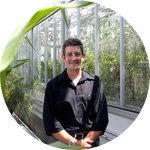
William Brad Barbazuk
University of Florida, Department of Biology and the UF Genetics Institute.
Associate professor
More
I develop and employ computational, comparative and functional genomics approaches to study genome architecture, function and evolution. While I was a post-doc working on the human genome project it became clear to me that the genome era would not only influence the scope and type of questions that would be investigated in biology, it would require a paradigm shift in the way experimentation and data analysis were performed. I work with large and complex plant and animal genomes where we apply computational sequence analysis methods to assemble and annotate large genomes and transcriptomes, investigate within species and between species sequence variation, genome structure, gene structure, gene content, gene/genome organization and gene regulation. My research projects involve collecting primary genome annotation data in the form of genome sequences and catalogues of genes, developing methods and tools to leverage next generation sequence capacities, examining gene-expression, identifying targets of RNA and DNA binding proteins, analyzing alternatively spliced isoform expression, leveraging genomic data and approaches to address fundamental evolutionary questions concerning genome evolution, and examining the function and regulation of RNA processing.
March 2016
Haven't created any projects yet!
Haven't backed any projects yet!
No lab notes posted yet!